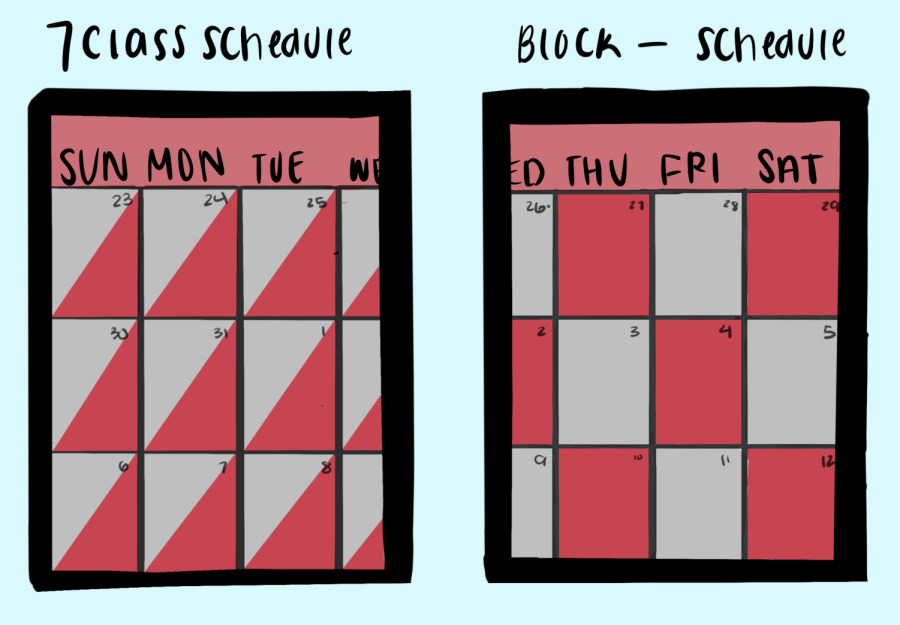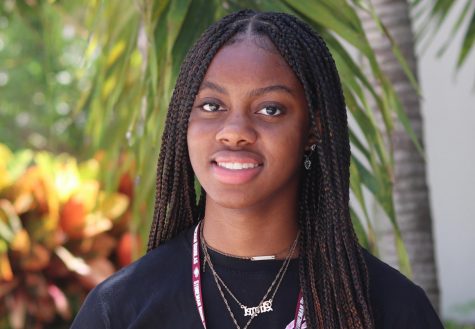[Opinion] Schools should revert to seven classes a day from block scheduling
Students believe schedules should revert to a seven class schedule.
April 4, 2022
First established in 1997, block scheduling has now been implemented in over 200 Florida high schools according to a study commissioned by the Florida Educational Research Association.
Block schedules were designed to replace traditional schedules of either six or seven 50-minute class periods with longer class periods of 90-120 minutes that meet interchangeably throughout the week. Its ideal purpose is to lengthen the amount of time in each class while having less classes per day, replacing the traditional schedule.
While block schedule systems may vary by school, they all share the same purpose of giving students fewer classes per day.
Different variations of block schedules are A/B (alternating day schedules of eight classes where classes are 90 minutes each and meet every other day), four by four blocks (students have only four 90-minute classes every day and a course is finished in one semester rather than a whole school year), trimester (classes meet daily with students taking two to three core classes having over three sixty-minute) and a 75-15-75-15 (courses are finished in one semester and students take four 75-minute classes).
These block schedules not only make it harder for students to focus, but also make it difficult for teachers to lecture. The attention span of a healthy teenager averages by age. But some psychologists, such as Karen Wilson and James Korn, argue that a standard student’s attention span is only around 10-15 minutes long.
Though student concentration levels alter according to mindset, motivation and applicability to material, an average students’ attention span is contradictory to a 90-minute block schedule that most students undergo. Teenagers struggle to concentrate on anything for 90 minutes, much less school work and lectures.
While providing only half a year to teach each course, the block schedules may cause teachers to feel rushed in the sense of teaching all the curriculum in a tight schedule. This case is most commonly found in English classes when students are to read required books. This not only stresses out the teacher, but the student as well. Some teachers may feel subject to rushing through a novel, making it harder for students to indulge or comprehend what they’re reading.
On the contrary, seven classes per day leave students with much more time to commit to each class. Students seeing their teacher every day of the school year would supply students with more opportunities for clarification on any assessments and more face-to-face time with teachers. Higher credit can also be obtained through this scheduling system. Students have more chances of taking additional elective courses, AP or dual credit opportunities, and additional support to uphold credits.
Although it is highly beneficial, these schedule changes are a big shift and are not taken lightly. Leaving students to have to sacrifice a course and teachers to have to sacrifice a planning period, it is difficult to bring announcements like these to teachers and students.
During this schedule, teachers would be left to rely on one of the seven periods during the day, the time they have before school, and early release days for consistent planning. Causing teachers to teach six courses in total, core classes will still meet standard class size while elective teachers have fewer students.
Overall, block schedules compel students to dedicate less time to each class which is insufficient for successful students. Students should be dedicating as much time as they can to their academic life which is potentially supported by a seven-period day schedule.











